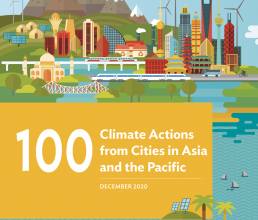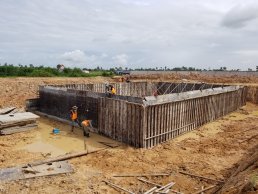First appeared in

Asian Development Bank
100 Climate Actions from Cities in Asia and the Pacific
Improvements to drainage, flood protection, solid waste management, and community mobilization will help increase resilience for the 100,000 residents living around Tonlé Sap, Southeast Asia’s largest freshwater lake.
Improvements to drainage, flood protection, solid waste management, and community mobilization will help increase resilience for the 100,000 residents living around Tonlé Sap, Southeast Asia’s largest freshwater lake.
The Kampong Chhnang and Pursat provinces, which border Cambodia’s Tonlé Sap Lake, are introducing environmental infrastructure to improve sanitation and reduce vulnerability in the regions, which can expect to see increased flooding due to climate change.
As part of the ongoing Integrated Urban Environmental Management in the Tonle Sap Basin project, Kampong Chhnang and Pursat will increase flood protection through embankment construction and reinforcement, with sluice gate and drainage installation further strengthening efforts. These measures are expected to reduce the number of households affected by flooding in Kampong Chhnang and Pursat by 80% and 50% respectively.
90%
SANITATION COVERAGE ACHIEVED
SANITATION COVERAGE ACHIEVED
Additionally, new solid waste collection and landfill management will improve sanitation in the two regions, and community resilience will be increased through climate change awareness campaigns and the introduction of early warning systems. Moving forward, the provision of similar decentralised urban services and resilient infrastructure may be replicated in other municipalities and urban areas within Cambodia.
The project is financed by ADB in conjunction with the Cambodian government.

Intensified flooding due to climate change will impact communities who live in low-lying areas with limited solid waste management (photo by Vuth Ratha).
The Challenge
Severe flooding and poor environmental sanitation are key infrastructure issues affecting the health and wellbeing of residents in Kampong Chhnang and Pursat.
Co-Benefits
Economic Flood control components will decrease property damage and lessen agricultural and commercial losses in the region.
Health Reduced flood risks and improved sanitation will decrease the prevalence of waterborne diseases, and the introduction of sidewalks and solar lamps will improve resident safety.

